Overcrowding 6) New Horizons in Angling
dive into an exploration of some new intriguing fisheries, and highlight innovative, or unexpected directions for fly fishing
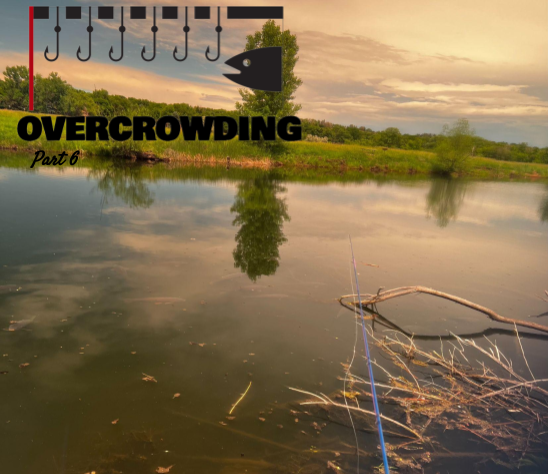
Welcome to our series on overcrowding, examining how we got here and where we go next to find new solitude.
If we want to start thinking about the new horizons in angling, we should start with exploring where new fisheries are coming into their own. Though this is a difficult and subjective question, I want to dive into an exploration of some new intriguing fisheries, elaborate on ways of approaching these places, and highlight innovative, or unexpected directions for fly fishing.
1. Shadows of the South Platte
The first example that comes to mind is the water downstream from popular Gold Medal or Blue Ribbon streams. These are the stretches of river left behind in the name of large trout. Though miles of boundary water may go unfished, not a single hole in the Gold Medal/Blue Ribbon section lasts a day without angling pressure. We all surely acknowledge that fish tend to move, whether intentionally relocated or forced to adjust to varying environmental factors, but the anglers seem to always follow the precise boundaries assigning Blue Ribbon water vs non-Blue Ribbon water. For the longest time, I was no different.
I picked fishing trips based on a river's fish density. Maybe not even knowingly, but the famous popular stretches of Western rivers are usually known for their high fish counts. Derived from electroshocking surveys, state fishery agencies usually publish information about how many trout per mile are found in a river, and anglers take notice. After all, these rivers offer greater angling opportunities than alternatives with few fish per mile. So I would solely focus my efforts on these rivers, our Blue Ribbon or Gold Medal streams. I don't think I was alone either, how many anglers plan trips to the Green River below Flaming Gorge because of its unprecedented trout per mile count? The Green is indeed a fishbowl, and places like this are the angling meccas of the West.
BUT... sometimes this blinds our approach, and rivers with lower density fish counts are perceived as not worth the time. More recently, I've had a change in philosophy. Through reluctant practice, I've learned to appreciate lower density river sections, and specifically what we miss by ignoring these places. Originally, I was introduced to a low density stream in Wyoming with impressively sized trout, opening my eyes to the perks of fishing these types of waters. Then I expanded my learning over the past several seasons, dedicating time to fishing boundary waters on the South Platte below Cheesman Canyon and the popular Deckers stretch. Born out of a pursuit to avoid excessive crowds, this stretch of river can still show moments of pure angling excitement. Not only have some beautiful trout been fooled in this lower stretch, the angling challenges of low density streams vary significantly from high density streams, serving to improve any angler’s skills at fishing new unfamiliar waters. As a quick comparison, how do high density trout streams (streams with greater fish counts per mile) compare to low density trout streams (streams with lower fish densities)?
Approaching High Density Trout Streams
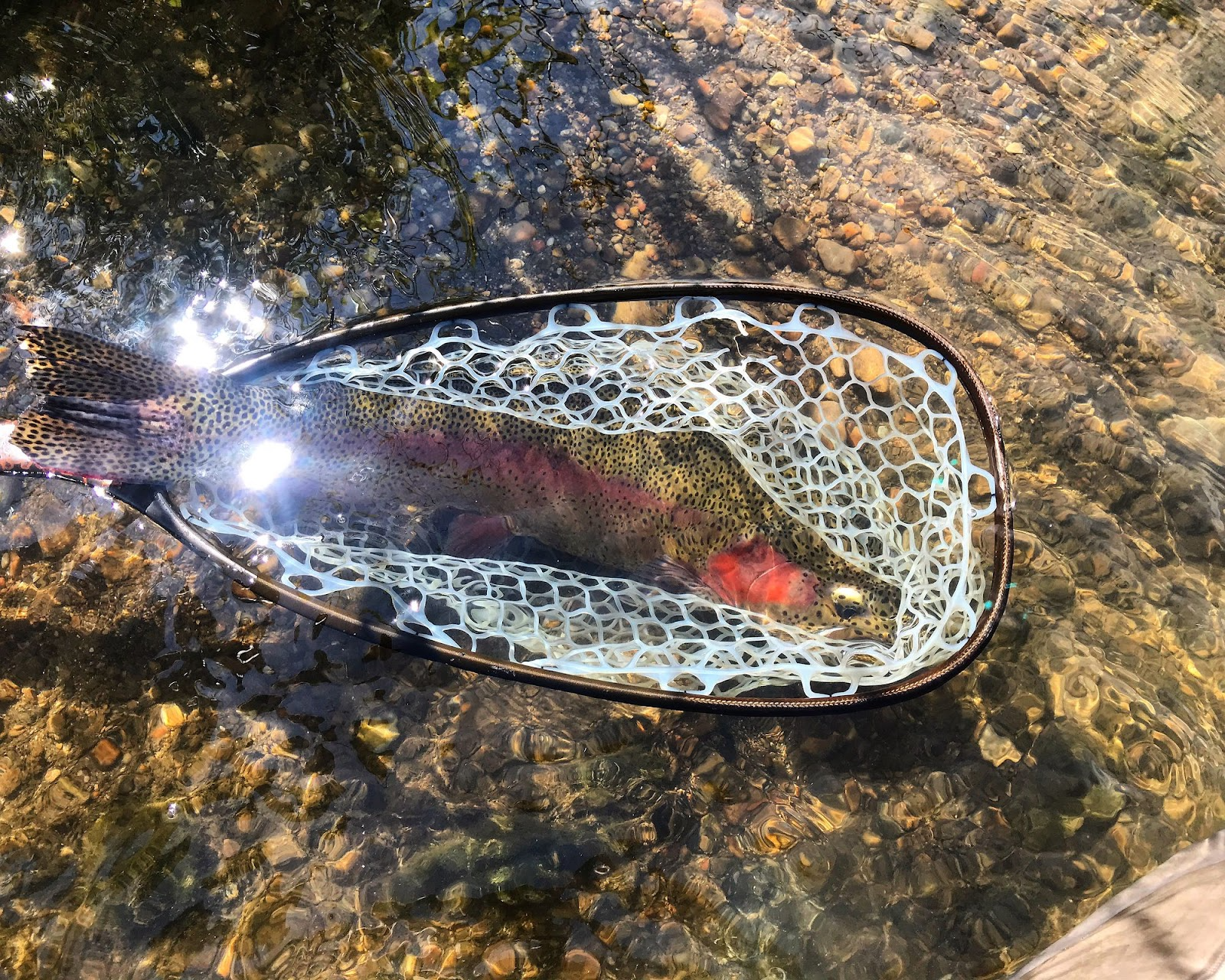
Our beloved rivers, the Blue Ribbon and Gold Medal trout streams have had plenty written about angling strategies but can be summarized below:
- Rivers with high fish counts produce enough food to grow lots of trout
- Fish can occupy a wide variety of habitats, and anglers can find fish in almost any suitable holding water during periods of optimal stream temperature
- Competition amongst trout can lead to extended periods of active feeding
- Angling pressure is usually greater: fly presentation is based on subtlety (match the hatch)

There are also some drawbacks to high fish density. For example, the Waterton Canyon stretch on the South Platte has such a high density of trout that very few can outcompete their peers and reach a large size. As a result this stretch is not traditionally viewed as a desirable angling destination despite its high density of trout per mile. So there must be more to the story than trout per mile counts.
Approaching Low Density Trout Streams
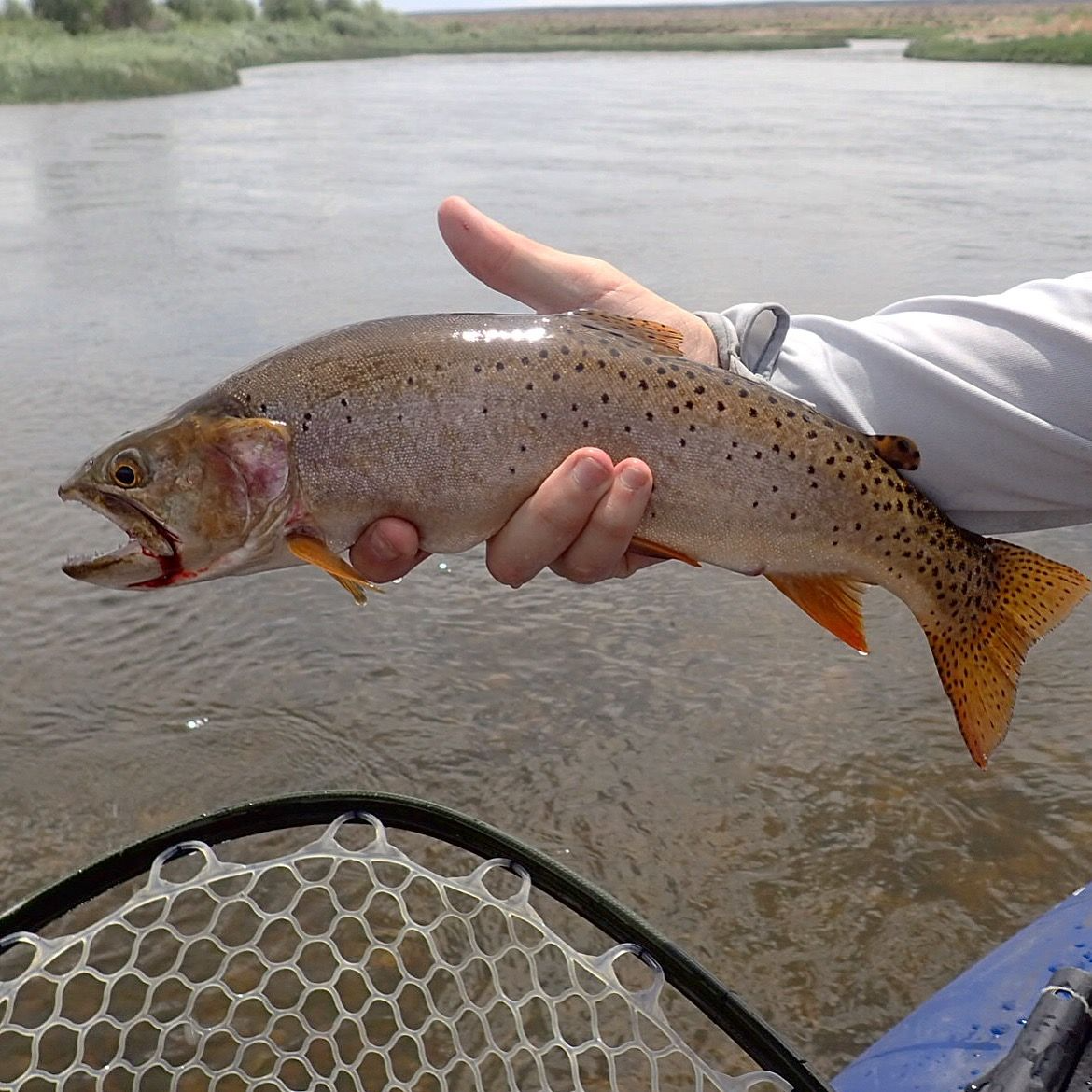
You might need to work harder for fish on these types of rivers but these rivers have their own advantages:
- Because fish don't need to compete for habitat, trout usually occupy the best available habitat (easy to read the water)
- Because fish don't need to compete (as much) for food, trout can reach larger size
- Because fish have larger habitat patches, they can be more aggressive in defending their turf and swiping for streamers
- Angling pressure is usually reduced: fly presentation is based on attracting any nearby fish (streamers, twitching dry flies, attractor nymphs)
- Fish might seasonally migrate based on food availability
Specifically overlooked is fish seasonal migration. Even though warmwater river temperatures push past the lethal limit for coldwater species during the heat of summer, these waters can provide fringe habitat for coldwater species during shoulder seasons. During spring runoff, coldwater fish may seek refuge lower in stream systems (or warmer lakes) where temperatures aren’t as frigid. Then again in fall, coldwater fish may seek refuge lower in stream systems to prolong their growth season and forage in warmer water for as long as possible before winter. Why? In warmer stretches of river, primary productivity and food availability are less restricted than in cold habitats, and trout and salmon species have been shown to navigate into these warmer waters when seasonally appropriate.
Remember that trout are optimizers and they know how to extract the most energy from their surroundings. So during summer months, coldwater fish may move towards cooler waters, but their ability to migrate towards cooler water during the hottest time of year may depend on their overall fitness, including their foraging success in spring and fall. And therefore, survival may depend on the quality of downstream warmwater habitat.
This might sound intuitive, yet even conservation efforts, on top of anglers, have predominantly focused on protecting, restoring strictly pure coldwater habitats. We like to think in black and white terms, warm vs cold. However, rivers exist on a spectrum. Temperatures heat gradually downstream on a gradient and the species that occupy streams gradually change and overlap downstream.
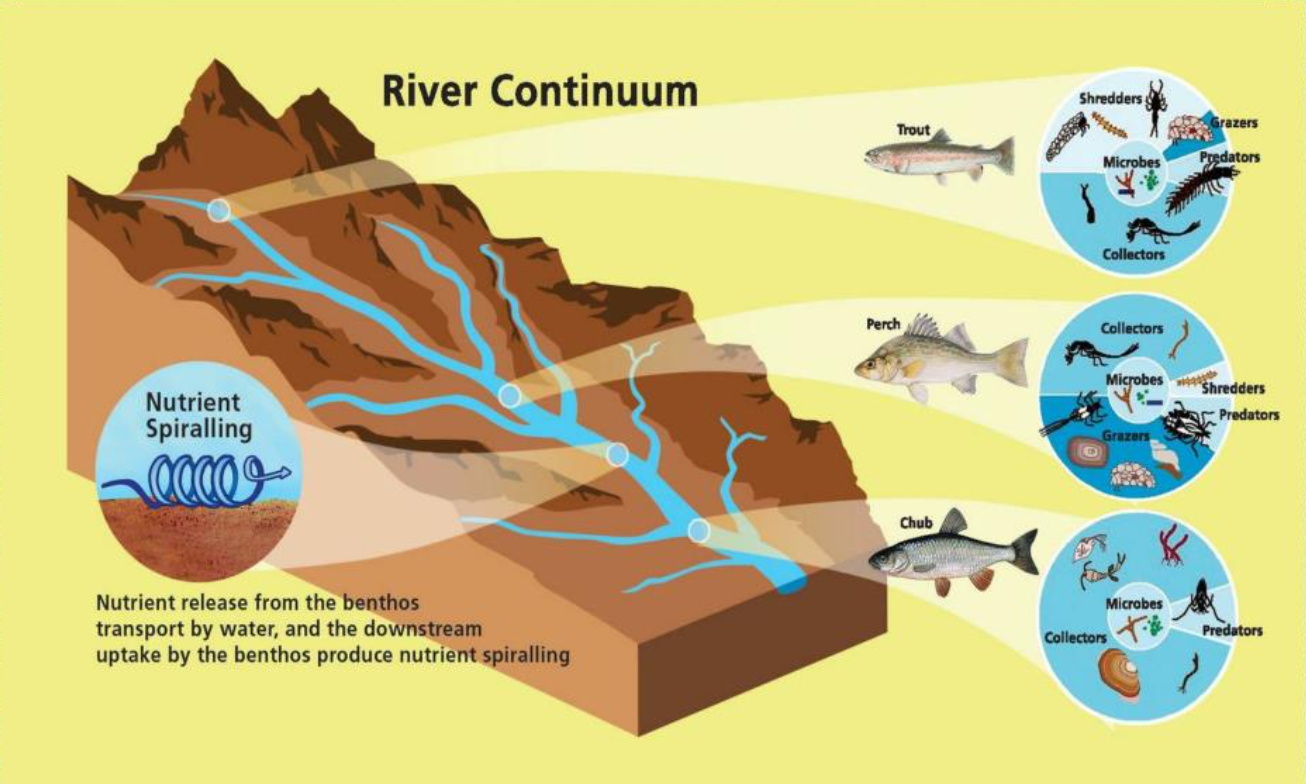
Source: Daniels, W
Most importantly, fringe coldwater habitats, or warmer stretches of rivers and lakes may still have seasonal importance for coldwater species. In fact, new research based on bioenergetics models suggests that the greatest growth potential for coldwater fish happens in spring and fall when fish have the opportunity to utilize warmer, nutrient rich waters. Based on these findings researchers concluded that in order to support coldwater habitats in a warmer future climate, connected warmwater habitats might prove an essential lynchpin to a coldwater conservation portfolio. Anglers might want to take notice as well. We all know the importance of headwaters and cool tributaries, but only so much cold upstream habitat exists. Despite such geographic limitations, these findings open up new opportunities to protect and enhance and pursue trout and salmon.
Of course there are drawbacks too, finding feeding fish will be the obvious challenge. Further, if the overall food availability is low, maybe that river just can't support many fish to begin with. But when you do find the right river and connect to a fish, it can make the day worthwhile. The old adage that trout don’t live in ugly places surely applies to trout streams without a Blue Ribbon or Gold Medal designations, right?
2. Phoenix Infrastructure Re-imagined
One thing that’s really non-negotiable in the fly fishing world is water. Running vs standing? Both work. Salt vs fresh? Both work. But absence of water? Not really going to work in fly fishing, unless you’re interested in throwing hookless-feathers at cats. So fishing in the desert has always been a precarious venture. But Phoenix, Arizona hosts over 1.6 million residents, with lots of mouths in need of water. Throughout Phoenix an extensive canal system delivers water to the metro area and is subsequently stocked with grass carp to manage and control vegetation throughout the waterways. This artificial river network has blossomed from utilitarian infrastructure to an urban carp fishery that honestly looks like a hell of a lot of fun! The valley’s electric power and water utility, Salt River Project, has taken to employing white amur, better known as grass carp, as a means of managing the vegetation in their drinking water conveyance. Throughout the Phoenix city and suburbs, vast canals are stocked and populated with grass carp to help clear algae and weeds from canals to better provide approximately 1 million acre-feet of water a year to residents. Anglers have learned to take advantage of the Salt River Project’s fish stocking, chasing after grass carp, as well as non-stocked common carp found in these waters. Interestingly, due to the services provided by the grass carp, this fishery is strictly catch and release. As a result, you have a desert version of a 21st century trout stream. Hatchery enhanced, catch and release, moving water. Checks all the boxes doesn’t it? Just for a bizarro world.
If we revisit my tenets of what makes a good fly fishery, or good fly fishing species, we see that though the setting and targets are unconventional, this place still meets our criteria: abundance, predatory fish, and targets willing to take a fly.
Abundance
An estimated 50,000 fish swim amongst the valley’s canals and causeways, providing plenty of chances to encounter grass carp for anglers. Canals are even fitted with grating, designed to restrict fish movement and help focus fish cleaning on specific canal sections. Plus, populations are annually replenished in the thousands, and even carefully herded when canal maintenance is needed. As a result, their constant presence has provided plenty of opportunities to get to know the behavior of these fish from an angling perspective.
Predatory Nature
Though “predatory” might not be the best word to describe a grass carp, they have proven valuable in controlling algae and weed growth, circumventing any need for intensive methods of vegetation removal. When crews are forced to herd fish during canal maintenance, fish sizes are typically measured, averaging around 30”, while some fish can get up to 40-45”. Fish don’t get that big without an appetite. So though “predatory” might be the wrong word, they are a hungry fish.
Ability to Take a Fly
With hunger, comes fly imitations. Locals have pieced together tactics for these fish. Equipped with rods ranging from 4wt-8wt rods, 3x leaders, and chartreuse eggs, mops and even swung streamers, the ability for grass carp to take flies has been vetted.
Though commonly found, these fish, along with the other carp found in urban ponds surrounding Phoenix, fit the bill as overlooked, liminal fisheries. The Phoenix canals aren’t the only place with a virgining carp river, southern California’s Los Angeles River is gaining attention in similar ways.
3. Stormwater Tarpon
If we head across the country we’ll find another example of canals opening new angling opportunities. Within Miami’s freshwater canals, juvenile tarpon have been known to follow moving water when levees open for water passage or in response to storm surge. As a result, those familiar with the area have found opportunities to pursue tarpon on the fly near the heart of the city. But the places they find these fish aren’t always the most pristine; not what you think of when you envision tarpon fishing. Locals find these fish in waters near road junctions, or in the derelict corners where water runs within the city. Juvenile tarpon have no issues with low oxygen, sometimes brackish waters, which expands their habitat beyond just estuaries in the Everglades backcountry. Then, you add in excess water from rain storms or tropical storms and these fish start chasing upstream, sometimes when fish are as young as fry. Either way these conditions, along with the man made canal system provide new, surprising conditions for tarpon angling.
4. Bonefish Can’t Hear Fighter Jets
Equally weird, I got the chance to hunt for “exotic” bonefish on flats in Hawaii. But the setting wasn’t exotic as you’d expect. Throughout the day F-22 raptors took off over our shoulders and raced almost 90° skyward from a nearby Air Force base. Sonically, these planes fracturing the peace of the rippling ocean waves, not to mention anybody nearby strumming a ukulele. A truly surreal experience that looked nothing like the idyllic imagery associated with wading the flats. As my ear’s overloaded with afterburner shockwaves, I asked the guide, “Do these fish spook when the planes take off?”, and without hesitation, as if he’s answered this very question hundreds of times, “the fish don’t care”. Then we quietly resumed wading, pretending that the rumble didn’t break the trance. At the very least, it provides an interesting anecdote about spooky bonefish behavior.
5. Bizarro South Platte
Closer to home, I feel that the liminal term also applies to the Denver South Platte. After countless excursions to explore more of the urban stretch of the river, I’m reminded of that unsettling but also familiar feeling that partially defines a liminal space. I’ve driven over the river thousands of times but only recently stood stream side under the highway overpass. When you get focused, it’s still just fly fishing. The rod casts the same. Reading the water is still the same for the rivers and ponds surrounding the area. The experience is just familiar enough to retain my focus, but when you step back, you might encounter decrepit infrastructure, discarded trash, or something slightly more bizarre. It’s both a natural, unnatural, familiar, and peculiar setting. I struggle to find a better word than describing these experiences as surreal.
6. Our Collective Blindspot: Trout Lakes

River fishing will always be my primary love, but I’m not alone. So if the fly fishing industry wants to continually grow, us anglers will need to adapt to find personal space out there on the water, unless we want to literally stand shoulder to shoulder. So, aside from paying a pretty penny to fish someone's private waters (more on that in a later chapter), what can a trout bum do?
Given alarming trends in rising stream temperatures, increased angling pressure since COVID, and variable yearly snowpack, I believe that trout stillwaters are a hugely overlooked resource. Said differently, at some point we may be forced to look elsewhere due to stream closures and unsustainable angling pressure on popular rivers. Yes, lakes... The dreaded "big blues" that are difficult to understand, and require (sometimes) separate sets of gear. Not just during runoff either. If this idea feels completely foreign, fear not, you don't have to start at ground zero. Competitive fishers and UK anglers have been unlocking the keys to lake fishing for years, and most Western American anglers haven't caught on...yet. But like the euro-nymphing trend, maybe this will be a new arena for growth.
How much time do we spend hunting for lake-run rainbows in the spring, and their brown trout counterparts in the fall? Madness sweeps over the rivers when these fish show up seasonally, but here's a little secret: those bruisers live in lakes for the majority of the year. So why not cut right to the chase and seek them in lakes? Further, the West has some amazing stillwater fisheries that may offer the needed relief, and suffer from less angling pressure.
Angler Density Doesn't Impact Lakes the Same Way
Simply put, 100 people fishing a limited stretch of river won't look the same as 100 people fishing a lake shoreline. In broad terms, good spots in rivers can be restricted to a select group of pools and riffles, while lake features, like shorelines, can offer continuous habitat that allow anglers to spread out. Additionally, fish in lakes are constantly moving vertically, and laterally. The fish aren't at all restricted as compared to rivers. Plus, the pool of resident fish living in a lake is much greater, offering more fish that haven't seen your fly before.
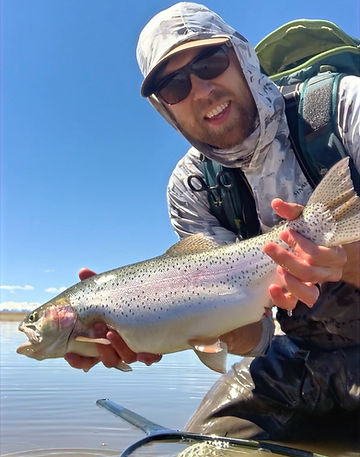
A blob eater, didn’t believe it would work until I tried it myself
The Other Side of the Euro-nymphing Trend
What few realize about “euro trends” in fly fishing is that the regions known for innovative euro-nymphing techniques also offer new insights into lake fishing. If you think lake fishing is just dunking a balanced leech under a bobber, you’d probably be excited to hear that other options exist! Just as jigged nymphs offered new perspectives into river fishing, there are innovative lake techniques (and flies) that might change your approach to stillwater angling. Even within fly fishing competitions, lake sessions are given equal importance- a perfect pressure cooker for teasing out the best methods and flies. Though we've heard about the wonders of Perdigons, and Frenchies, we don't often hear about Blobs, Sparklers, Crunchers, Buzzers, Minkies, Cats Whiskers, and so many more. Not to mention tightline nymphing chironomids… on a lake. They are tactics worthy of research, and their own dedicated books.
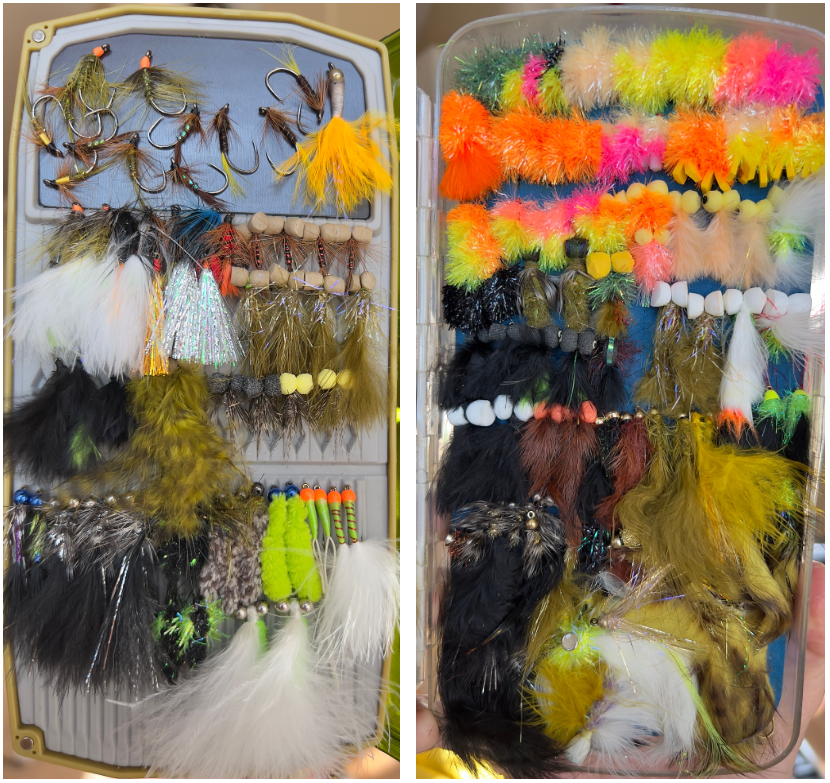
Turning Angling Goals Upside Down
For some anglers, a change in destination isn’t enough. Instead, a complete paradigm shift has reshaped which fish are a worthy quarry.
There are now anglers trading in all the glory of catching large fish and intentionally scaling down their approach. Micro fishing is gaining popularity amongst Texas anglers who decided to forego shots at trophy bass for chances at intentionally small fish like the blackstripe topminnow, freckled madtom, and blacktail shiner, chasing them with #30 midge patterns. Again, we see new value in once forgotten, overlooked, even abandoned niches within angling. Micro fishing exemplifies what a liminal fishery might look like, and what modern angling exploration entails.
Sources:
- Nealson, S. 2021. Warm water has overlooked importance for cold-water fish, like salmon and trout, study finds. Oregon State University Newsroom. https://today.oregonstate.edu/news/warm-water-has-overlooked-importance-cold-water-fish-salmon-and-trout-study-finds
- Vannote, R. et al. 1980. The River Continuum Concept. https://uncw.edu/cms/aelab/documents/mallins%20classes/the%20river%20continuum%20concept.pdf
- Daniel, W. 2015. Stream Ecology. Lake and Stream Leaders Institute. Michigan State University. https://www.canr.msu.edu/uploads/234/68324/2015_session_2/Daniel_Stream_Ecology_For_Printing.pdf
- United States Census. 2021. QuickFacts Phoenix city, Arizona. https://www.census.gov/quickfacts/fact/table/phoenixcityarizona/PST045221
- Bowling, J. 2018. The fish that clean Phoenix’s canals are gorging themselves and getting even bigger. The Republic | azcentral.com. https://www.azcentral.com/story/news/local/arizona-environment/2018/01/11/fish-clean-phoenixs-canals-gorging-themselves-and-getting-even-bigger/1016928001/
- Salt River Project. Accessed 2023. Fishing in SRP-managed canals. https://www.srpnet.com/grid-water-management/water-recreation/canal-trails/fishing
- Loon Outdoors. Different Fish, Different Places: Ch. 1 - Canals In the Desert. Youtube. https://www.youtube.com/watch?v=-vBBFFNgJL8&ab_channel=LoonOutdoors
- Estrada, E. Tarpon Are Taking Over Miami!!!! - GladesDays (Fly Fishing Film!). Youtube. https://www.youtube.com/watch?v=LK_bgYzoGsA&ab_channel=EricEstrada
- University of Maryland Center for Environmental Science. 2010. Rising water temperatures found in US streams and rivers. Science News, Science Daily. https://www.sciencedaily.com/releases/2010/04/100406101444.htm
- Peterson, C. 2021. Fishing Pressure Increased During COVID. Is That a Bad Thing for Gamefish Populations? Outdoor Life. https://www.outdoorlife.com/fishing/fishing-pressure-increased-alot-during-covid/
- Gesing, L. 2019. Four seasons: Colorado water in a changing climate. The Colorado Independent. https://www.coloradoindependent.com/2019/01/24/colorado-snowpack-climate-change/


